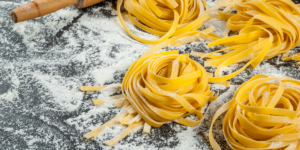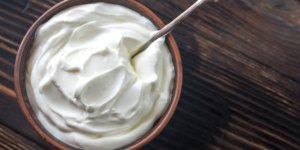With the new wave of healthy living, the food market has experienced increased production and sales of “health foods”. However, some of these health foods are not healthy and some others are even detrimental to your health. In this article, we’ll explore five “health” foods. From energy drinks and bars to flatbread and granola, we’ll examine the hidden risks and offer alternative options to help you make informed choices about what you put in your body.
Energy foods
Energy drinks and bars are one of those foods that have been marketed as healthy. The manufacturers capitalize on the fact that these foods boost your body’s energy levels in minutes and help improve your brain function. This is not wrong. Nevertheless, with this food, it can be said that the risks outweigh the benefits.
Apart from the fact that energy drinks could increase your risk of heart problems, they are also loaded with enough sugar to make you diabetic.
Energy bars are no different. They even become worse when they are coated with chocolate. The whole grains used to make energy bars are healthy, but their health benefits are countered by the high sodium content and artificial additives.
Replace energy bars with other bars containing nuts, seeds, and maybe some honey. Coffee, or better still, water, are better options than energy drinks. Even if you must take them at all, let it be occasional.

Dried fruit
Are you shocked that this made the list? Well, here’s why you shouldn’t be. Fruits are healthy, no doubt. They supply you with the nutrients and vitamins you need for a healthy body. However, the way fruits are consumed influences their benefits to your health.
The first problem that dried fruit has is the fact that it is dry. The low water content of this food makes you more likely to eat it in excess. A ration of 25 grams of dried fruit is equivalent to about 100 grams of fresh fruit. This means 100 grams of dried fruit is comparable to 4 large-sized kiwifruits.
And if you eventually overeat dried fruits, it puts you at a higher risk of dehydration. The drying process also makes it lose its water-soluble nutrients, causing it to be less healthy than fresh fruits. Moreover, lower water content means slower digestion and potential bloating.
The better option remains to eat fresh fruits. Cutting these fruits into small shapes may make them more attractive to toddlers and children.

Low-fat foods
Whether it’s salad dressing or peanut butter, low-fat foods are a hoax. Low-fat salad dressing or peanut butter sells the idea of “healthy” to you with the words “low fat”. But the truth is although they may be low in fat, they are high in many other unhealthy components.
You’re better off snacking on a chocolate bar than a salad bowl with low-fat dressing. These low-fat dressing and peanut butter are not very palatable on their own. A large amount of sugar and low-quality fat is then used to improve the taste of the dressing or peanut butter. Basically, fat is replaced with sugar.
The risks of this ungodly exchange include blood sugar levels that are through the roof, chronic inflammation, and possible heart disease.
Instead of low-fat salad dressing, opt for balsamic vinegar. It makes a great salad dressing. The fat present in peanut butter is a healthy one. You don’t have to go for low-fat options. But if you are still uncomfortable with the idea, you can ditch peanut butter altogether. Avocado makes for a richer and healthier spread.

Granola
Granola should be a healthy food. It contains a generous amount of oats, nuts, fruits, and seeds, all of which provide a wholesome amount of nutrients. However, the high levels of processing and added sugars present make it less healthy. This does not necessarily make it a bad food option; it just means it is not the healthy food it claims to be.
From 100 grams of any granola brand, you can expect an average of 400 calories and 5 teaspoons of sugar. This is because store-bought granola is often coated with sweeteners like molasses, sugar, honey, and corn syrup. Some are even fried in oil.
An alternative is to make your granola at home, controlling the amount of sugar that goes into it. If granola had a cousin, it would be muesli. Muesli is just like granola but without the added sugars, so it is a great replacement.

Flatbread
Pita bread, tortillas, and naan are examples of flatbread. Flatbread has a good number of health benefits. Still, it is not as healthy as some people think it to be.
The health benefits of flatbread are not as pronounced as with whole grain bread and they are affected greatly by other accompanying ingredients. A few contain as much added sugar as you would find in white bread. You’re more likely to get more calories eating one slice of flatbread than eating a slice of white bread. Because flatbread slices are usually big, eating more than one at a time could be a lot less healthy than enjoying a regular sandwich made with white bread.
The real health food is whole grain bread. Apart from the richness and fullness of taste it gives, this food benefits your health in many ways other bread types can’t. It aids your digestive health and your overall wellness.

Bottomline
Before you blindly trust any label that says “health food”, be sure to verify the claims. You can make informed decisions about your diet and lifestyle by being aware of the potential risks and alternatives. Take control of your health and well-being by choosing whole, nutrient-dense foods and being mindful of marketing gimmicks and hidden ingredients.











